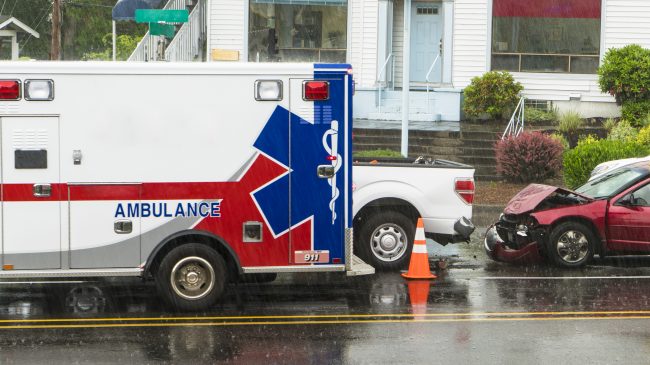In California, response times for ambulances are usually supposed to be 12 to 15 minutes. In order to achieve those response times, ambulances with their crews of Emergency Medical Technicians (EMTs) and paramedics are located strategically around a county based on historical patterns of incoming emergency calls, local road networks, and other factors. There are complex computer programs that help ambulance companies optimize where to station their ambulances and how to be able to deliver desired response times. And those response times are highly correlated with saving lives.
Of course, ambulance crews, like everyone else, need to take breaks away from work during their shifts to go to the bathroom, eat lunch, and relax. Traditionally, like most public safety workers, when EMTs and paramedics are on breaks they remain on call. That way, if an emergency happens within 15 minutes of them they can take the call and get there in time to help rather than kicking the call to an ambulance crew that is farther away from the emergency and may not be able to arrive within the needed response time.
But in 2016 the California Supreme Court ruled that new state laws about employee work breaks also apply to EMTs and paramedics, which meant those workers could not be on call while taking breaks from work. That, in turn, means that emergency service agencies have tough choices to make. They can have ambulances and crews primarily dedicated to giving breaks to crews. This “relief” crew would take over responding to emergencies for 15 to 30 minutes, giving the original ambulance and crew time for a break. The problem is that to do this, emergency agencies would need a lot of these “relief” crews to provide breaks to all their on-shift crews. And if an emergency call comes in while the relief crew is there on duty, they have to respond to the emergency and stay with it until that call is finished. As a result, the relief crew is unlikely to be able to provide a break to the next crew on its schedule. So another substitute or relief crew is needed for that.
Since the state Supreme Court’s ruling, the additional costs in providing emergency services have been reflected in rising insurance rates, higher costs to county governments, and financial losses for ambulance companies. To provide coverage and maintain response times in this manner in the long-term would require something on the order of 25 percent to 30 percent more ambulances and crews. The nonpartisan Legislative Analyst’s Office (LAO) found “in order to meet the terms of their existing contracts, ambulance companies would likely have to operate significantly more ambulances in each area than they do now. This would increase costs to ambulance companies—potentially by more than $100 million each year statewide.”
The LAO concluded that it is “likely that much of these higher costs would be borne by counties” who contract with ambulance companies and also result in higher “health insurance premiums for people with commercial health insurance.”
Proposition 11 would reinstate the rules for EMTs and paramedics that existed before the court ruling, allowing crews to be on call while on breaks. It would also provide for make-up breaks if a crew does get called while it is on a break. Typically, this is how just about everyone in the emergency services industry has done it and workers in the industry knew it was part of the job. Returning to that system, which works, just makes common sense. The last thing most Californians need is another big spike in the costs of health care and emergency services.
This column was originally published in The Orange County Register.

